Not many realize how much mineral diversity can be found in Georgia. The Peach State boasts four geographic regions and an astounding array of minerals, both gemstones and industrial. You can’t seem to flip a rock in the area without something interesting showing up. For a medium-sized state, Georgia has a lot of interesting rocks.
So, let’s dig in and take a look at some of the rocks, minerals, and gemstones found in the state of Georgia.
List of Minerals and Gemstones Found in Georgia
1. Staurolite
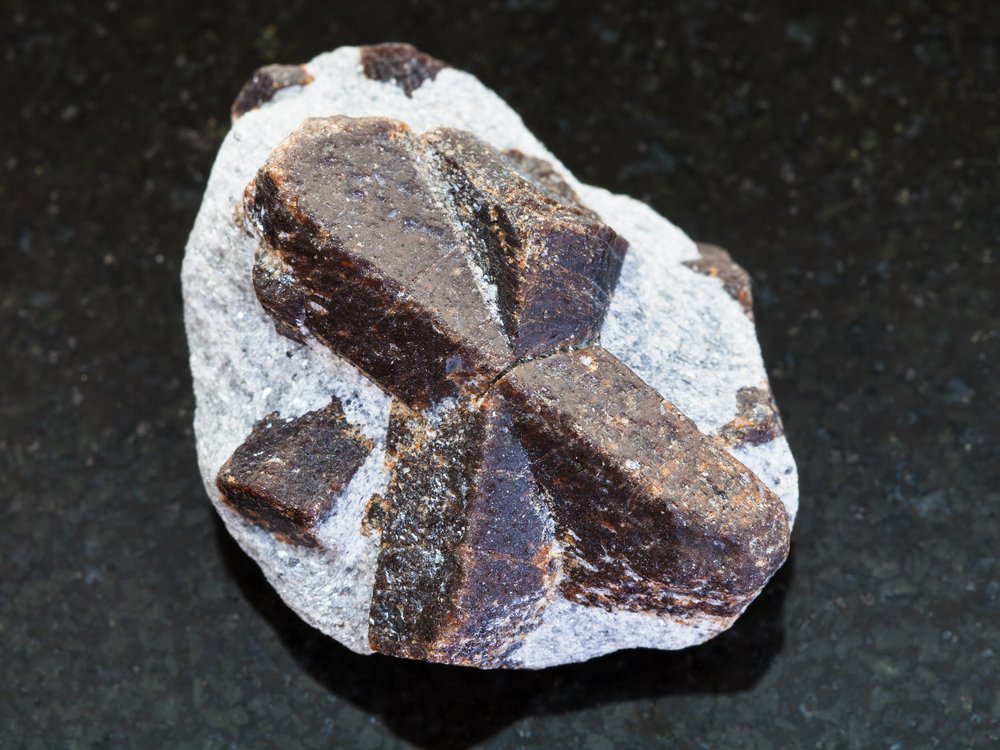
Staurolite is a crystalline mineral that shows up embedded in metamorphic rocks in the northwestern portion of Georgia. They’re also known as Fairy Crosses due to the unique way that the crystal tends to embed in the bedrock, with either a 60° or 90° angle. The best examples look like a standard cross, with sharp right angles between the twinned crystals.
Staurolite is a hard mineral, generally opaque and bearing a rusty red color that has heavy hints of brown. Samples are often sold embedded in the bedrock still, showing off the form of the crystal without revealing the whole thing. They’re a very unique sample, sought after for their form rather than any lapidary use.
Staurolite is a neosilicate mineral with high hardness and a white streak. Combined with the distinctive form, this makes it comically easy to identify in the field. There’s nothing out there quite like it, especially in Georgia. Its only use other than being put on display is geological. Scientists use it as a depth marker to determine the age of bedrock in areas where it’s present.
In Georgia, there are a few places to look for your own staurolite. You’ll want to try one of the following regions:
- Cherokee County
- Fannin County
- Gilmer County
They’re spread across a wide area of north-central and northwestern Georgia. Look for areas with access to metamorphic bedrock like road cuts and cliffsides for the best chances of bringing home a Fairy Cross.
2. Marble

Marble is a classic stone, one of the many massive stones that have been used for art since antiquity. It’s not only found in Europe, of course, and there are many impressive deposits of the stone in the United States. Georgia’s marble was used for monuments and statues in early American history since its discovery in the mid-1830s.
Georgia marble is very much the classic marble: a white stone with light-to-dark grey streaks lacing across its surface. Its not as exciting as some of the fossil marbles out there, but it’s very good for commercial use in general. There are places scattered across North-Central and Northwestern Georgia where it can be found and marble formed an important part of industry in Georgia’s history.
Marble itself is a metamorphic stone with a moderate hardness. It’s the metamorphic end result of limestone under great pressure, where the calcium recrystallizes and forms a more compact, dense structure than normal limestone. The term marble is also used for very high grade limestone in the stone industry, creating some confusion for amateur rockhounds.
The vast majority of marble sites in Georgia are known and being exploited, you can find some marble of your own around the outskirts of quarries and mines where legal. The following areas all have marble deposits:
- Cherokee County
- Pickens County
- Newton County
Among others, of course. That said, the above places have active quarries.
3. Calcite
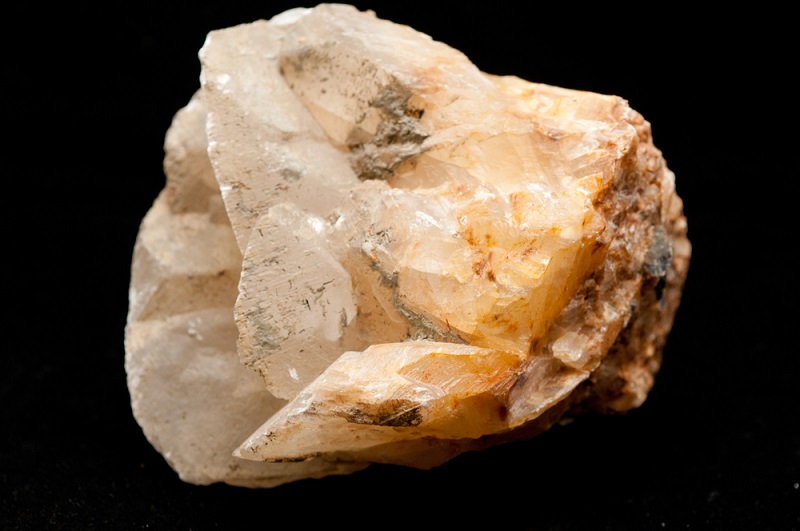
Calcite is a heavily crystallized carbonate mineral, and when it degrades it becomes the basis for marble and limestone. Crystals of the material are what interest most collectors, especially larger or colored ones. Calcite is everywhere in nature, but it’s soft and tends to erode rapidly once exposed.
Most of the calcite in Georgia is used for industrial use. The crystals tend to be white and a bit opaque, which makes them less desirable for the mineral trade. In some places you can find larger crystals of the mineral, often with good clarity, or even the sought-after specimens with rhomboid crystals.
Still, collection-grade calcite is relatively rare in the state. Occasionally pink samples of the mineral can be found, along with some other very rare faint colors. Your best bet for finding it in Georgia is simple: just go somewhere where you can find marble quarries.
Calcite is closely related to marble and limestone, which makes finding it easier in the North-Central portion of the state. While it doesn’t often produce world-class samples, a humble hand-collected sample often has more value for the person who collected it.
4. Barite
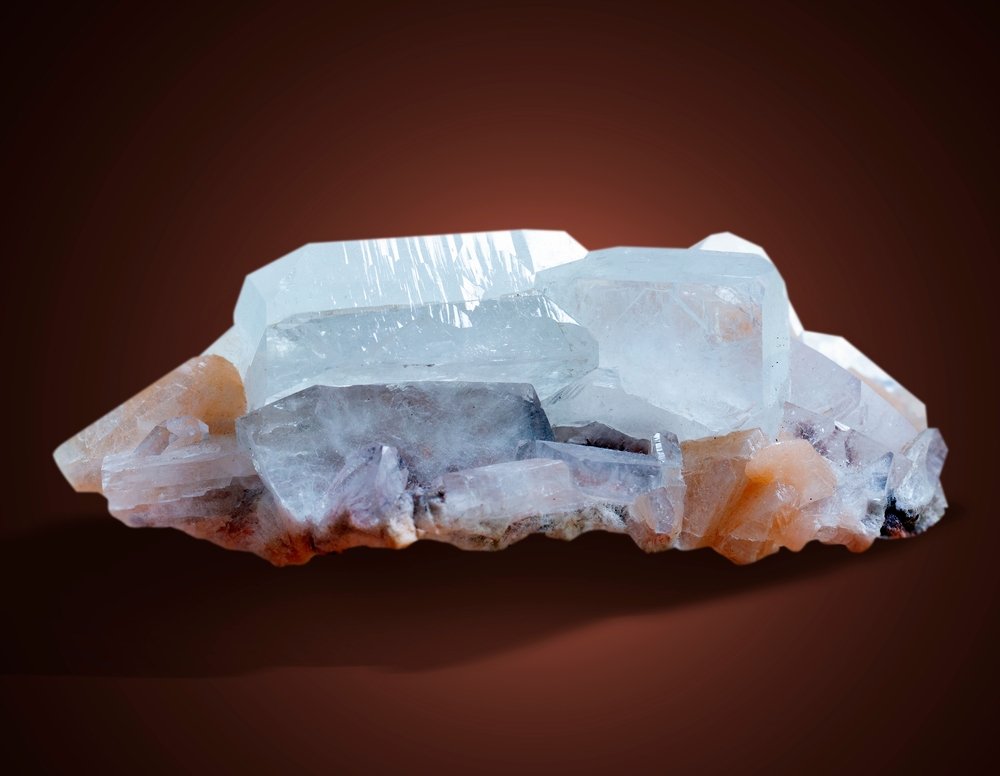
Barite is a crystalline compound most often used in an industrial capacity. There are many different forms of it, some more attractive to collectors than others. Barite in Georgia is most often found as large-ish, clear crystals. You can also find the occasional blue or yellow example among the places it’s found.
Barite is used as a source of the metal barium, in addition to being a nifty collector. A lot of it also ends up being used as fillers in paints and other chemicals. The main use is still in petrochemical drilling, where barite is added to the mud in order to weight it down to prevent problems during the process.
Barite is closely associated with celestine, a pale blue crystal, and the lead-bearing anglesite. Barite is also quite dense for a mineral, coming in with a specific gravity of 4.3-5. The mineral itself isn’t exactly rare, but it’s not the most commonly found thing in the Earth’s crust either.
The majority of collectible forms of barite that come from Georgia are found in one place. The Cartersville Mining District in Bartow County. Those looking to collect their own samples would do well to start with public lands in that region.
5. Beryl var. Aquamarine
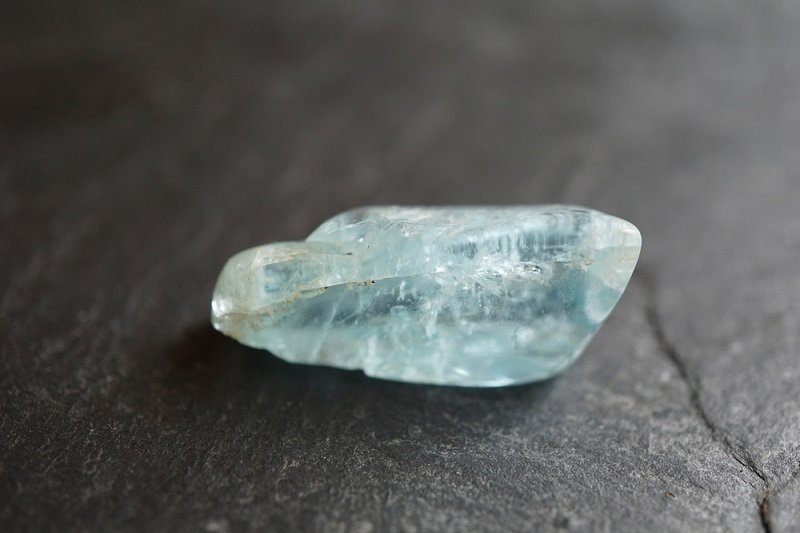
Beryl is spread across Georgia like crazy, with the vast majority of it bearing the light blue color of aquamarine. The beryl family includes many famous gemstones, the most notable being emerald. Along with the green variation, there is also heliodor, morganite, and a few others that are all in the same family.
Beryl is a hard gemstone, running at an 8 on the Moh’s scale, which makes it a favorite for jewelry. It can be very valuable when it has high clarity and enough quality to make decent gemstones, but it’s always of interest to collectors. Most of the aquamarine that comes out of Georgia is specimen-grade, rather than being facetable rough, but that’s not true in every case.
The beryl in Georgia is sometimes of other colors, but only in vanishingly small quantities. The majority of crystals tend to be large, well-formed, and often opaque. Even aquamarine, usually known for its incredible clarity compared to emerald, will tend to have enough inclusions to make it impossible to see through. Many samples still display incredible color, but they’re not the type to be cut into gemstones for jewelry.
While various examples of beryl are spread throughout the state, the best place to go is the Hogg Mine which is a paid dig site that produces great specimens. Other samples can be found in:
- Banks County
- Athens, Georgia area
- Southwest of Monticello
Depending on the area you may need to sift, dig, or pan for your crystals. The good news is that beryl often shows up with other desirable stones in the Peach State.
6. Tourmaline
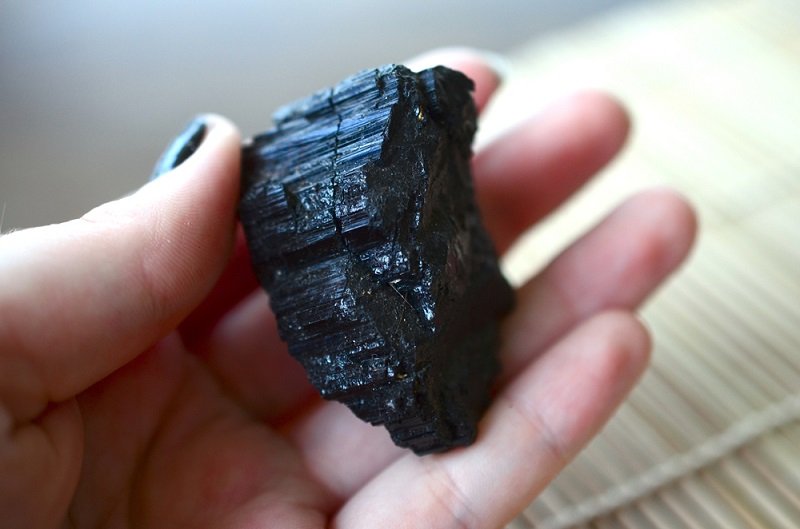
Alright, before we get any further we should clarify one thing: there is no gem-grade tourmaline in Georgia. Or rather, the pieces of it that are gem-grade are incredibly rare. The vast majority of what you’ll see is the black tourmaline crystal known as schorl. It’s still a desirable and interesting mineral, but it’s not on the same value scale as varieties like indicolite or rubellite.
Schorl is a bit less valuable, but impressive specimens are dug up in some places in Georgia. The Cochran Mine is known for producing large schorl specimens up to 3’ in length, for instance. The majority of tourmaline can be found in river or creek beds and in pegmatites that dot parts of the state and will be much smaller.
Tourmaline is a silicate mineral with good hardness. Schorl is often found intertwined with the surrounding rocks in a way that can make them hard to remove entirely. Other times the specimens will separate cleanly with just a bit of effort, but many specimens still hold a significant part of the local bedrock.
Those searching for a tourmaline should visit the Hogg’s mine where it can be found alongside other crystals. It can also be found in any location bearing pegmatites in the state, and samples can often be panned from local waterways.
7. Quartz/Amethyst
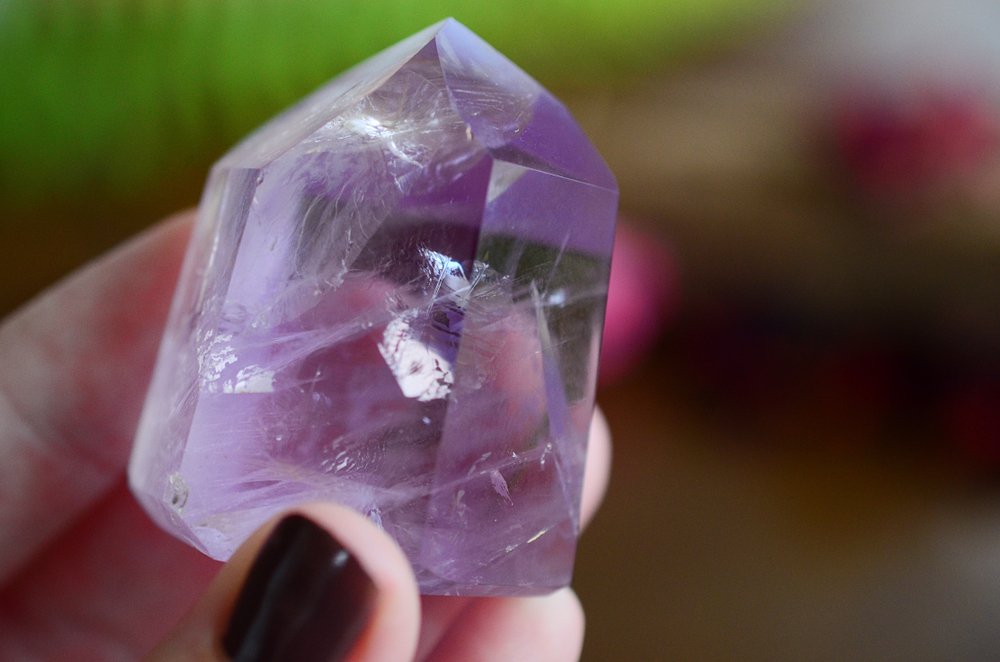
Quartz is the most common of the various crystals that end up in collections. Amethyst is its relative, purple-colored quartz with iron trapped in its crystalline lattice. The coloration of amethyst has made it a favorite of collectors for a long time, and the purple material yielded from the Urals in Russia was once held in just as high of esteem as ruby, emerald, and diamonds.
Quartz is comprised of silica, which makes up a huge portion of the earth’s crust. Many common stones, like jasper and agate, are also comprised of the same mineral but happen to have a smaller, more hidden crystalline structure. The coloration comes from various minerals embedded in the crystal or more complete inclusions held in the crystal itself.
In Georgia, amethyst is present in some quantity. There are even a couple of locales known for producing larger stones with more depth of color than seen in a lot of other places. These amethyst samples are highly-prized, if not exactly facet-grade in most cases.
The best place to try is the fee dig at Jackson Crossroads Amethyst Mine or the Hogg Mine mentioned above. The crystals can also be found in smaller quantities in stream beds in the northern and western portions of the state with regularity.
8. Gold
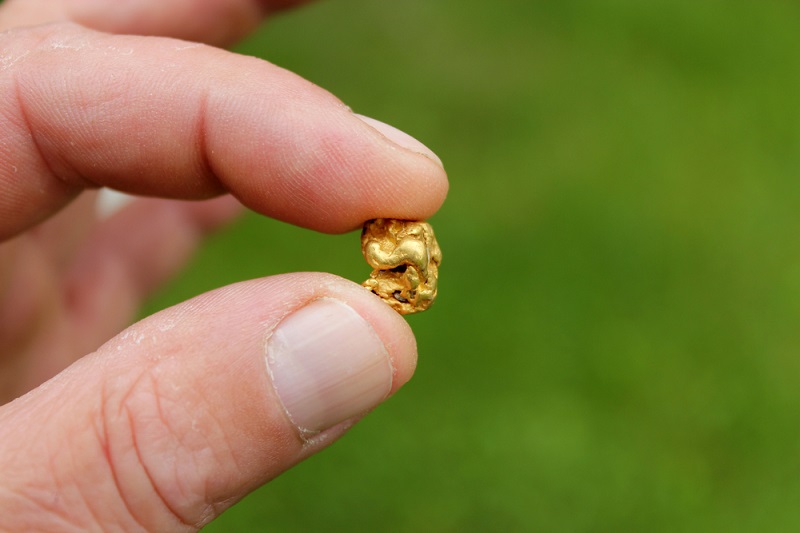
The yellow stuff makes the world go around, and wherever it’s been present humans could be found sniffing it out and melting it down. Gold was found in large quantities in Georgia, particularly in Cherokee County.
Georgia is part of the Georgia Gold Belt, the largest and best gold-bearing region East of the Mississippi River. Once found there was the usual gold rush, a common event in US history before more proper mines were firmly established. Georgia is still a large producer of gold.
Gold claims are put down… well, everywhere that gold can be found. Because of that, the chances of stumbling upon a major lode are nonexistent but the amateur prospector can still find gold in the state.
If you’re looking for gold check waterways that are downstream from areas that are known to hold gold, or that held gold in the past. The alluvial deposits in stream bottoms are simple to pan out. It may not make you rich, but collecting your own gold from nature is an incredible experience.
9. Garnet
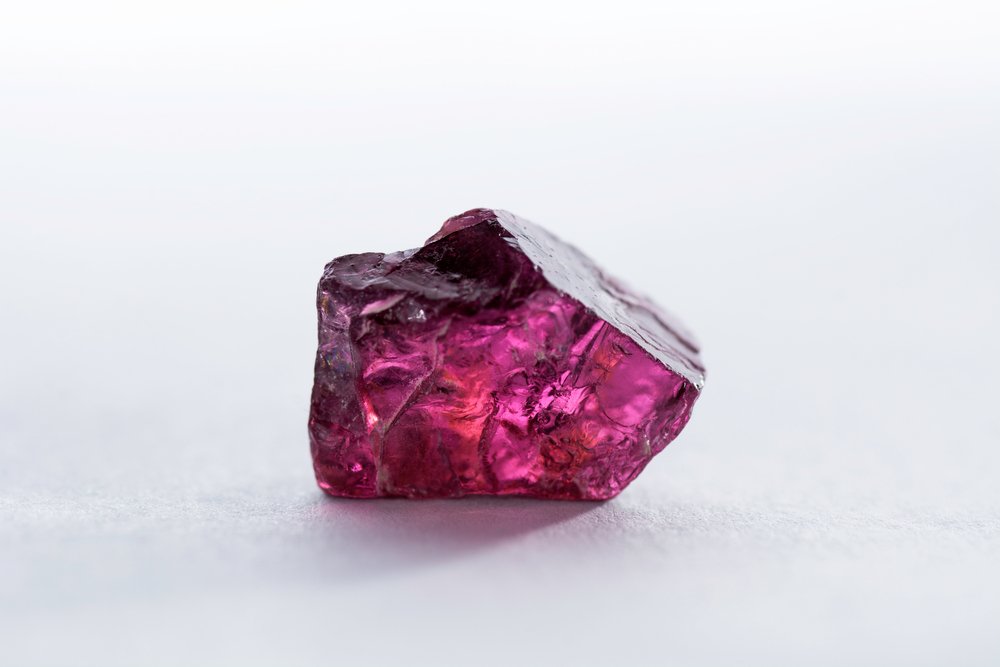
While not as common as some of the minerals on this list, garnet is among the treasures hidden in the rich soil of Georgia. Indeed, at one point a 5-pound garnet was pulled from the area near Piedmont pointing to some pretty impressive crystals overall. Where found the garnets of Georgia are generally of the anhedral variety, lacking the tight crystalline structure that some people associate with garnets.
Garnets are a fascinating mineral, a silicate with slight variations that produce a rainbow of color. The most common garnets are red, including those that are so included as to appear black. Other varieties range from light yellow to orange to even green in the case of demantoid and tsavorite garnets. The majority pulled in Georgia will be a simple, saturated red if they have the clarity to not appear black.
The garnets in Georgia often occur in the stone mica-schist. This stone covers large portions of the state and garnet-schist is present in many of these locations. The garnets range from small, anhedral crystals that look like red spots on the darker background to much larger, well-formed crystals that weather out of the bedrock on occasion.
If you’re looking for garnets in Georgia, you may want to try the following areas:
- Cherokee County
- The area around Piedmont
- Hogg Mine
You can also try panning in most creekbeds and streambeds, especially if they’re downstream from an area where that’s covered in mica-schist.
- Online rock and mineral club for collectors of all levels!
- Find community with like-minded rock and mineral enthusiasts.
- Monthly Giveaways!
- Free Access to Entire Digital Library of Products (current and future products)*


